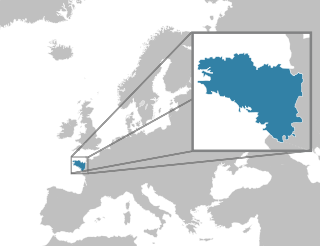
Brittany is a cultural region in the west of France, covering the western part of what was known as Armorica during the period of Roman occupation. It became an independent kingdom and then a duchy before being united with the Kingdom of France in 1532 as a province governed as if it were a separate nation under the crown.

Arthur I was 4th Earl of Richmond and Duke of Brittany between 1196 and 1203. He was the posthumous son of Geoffrey II, Duke of Brittany and Constance, Duchess of Brittany. His father, Geoffrey, was the son of Henry II, King of England.

The Duchy of Brittany was a medieval feudal state that existed between approximately 939 and 1547. Its territory covered the northwestern peninsula of Europe, bordered by the Atlantic Ocean on the west, the English Channel to the north. It was less definitively bordered by the Loire River to the south, and Normandy and other French provinces to the east. The Duchy was established after the expulsion of Viking armies from the region around 939. The Duchy, in the 10th and 11th centuries, was politically unstable, with the dukes holding only limited power outside their own personal lands. The Duchy had mixed relationships with the neighbouring Duchy of Normandy, sometimes allying itself with Normandy, and at other times, such as the Breton-Norman War, entering into open conflict.
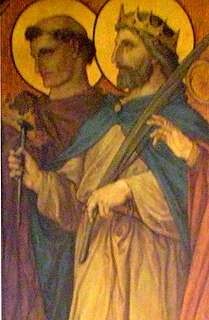
Salomon was Count of Rennes and Nantes from 852 and Duke of Brittany from 857 until his death by assassination. He used the title King of Brittany intermittently after 868. In 867, he was granted the counties of Avranches and Coutances.

Paimpol is a commune in the Côtes-d'Armor department in Brittany in northwest France.
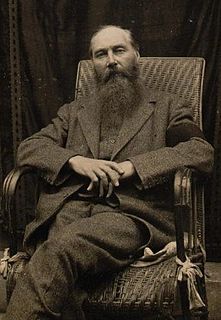
Joseph Guy Marie Ropartz was a French composer and conductor. His compositions included five symphonies, three violin sonatas, cello sonatas, six string quartets, a piano trio and string trio, stage works, a number of choral works and other music, often alluding to his Breton heritage. Ropartz also published poetry.

Guérande is a medieval town located in the département of Loire-Atlantique in western France. The inhabitants are referred to as Guérandais, for men, and Guérandaise, for women.

Anatole le Braz, the "Bard of Brittany", was a Breton poet, folklore collector and translator. He was highly regarded amongst both European and American scholars, and known for his warmth and charm.
An Iceland Fisherman is a novel by French author Pierre Loti. It depicts the romantic but inevitably sad life of Breton fishermen who sail each summer season to the stormy Iceland cod grounds. Literary critic Edmund Gosse characterized it as "the most popular and finest of all [Loti's] writings."
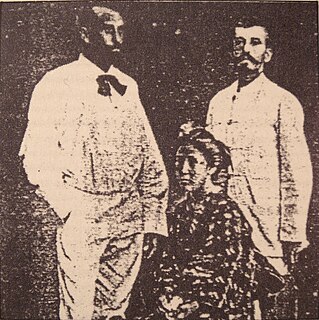
My Brother Yves is a semi-autobiographical novel by French author Pierre Loti. It describes the friendship between French naval officer Pierre Loti and a hard drinking Breton sailor Yves Kermadec during the 1870s and 80s. It was probably Loti's best-known book, and its descriptions of Breton seafaring life, on board ship and on shore, set the tone for his later acclaimed work An Iceland Fisherman (1886).

Jean Boucher was a French sculptor based in Brittany. He is best known for his public memorial sculptures which communicated his liberal politics and patriotic dedication to France and Brittany.
The Breton regionalist union was a Breton cultural and political organisation created August 16, 1898. It was a broadly conservative grouping dedicated to preserving Breton cultural identity and regional independence. It expressed the ideology of mainly middle-class and aristocratic groups to secure continuity in local administration and Breton culture.

A Pardon is a typically Breton form of pilgrimage and one of the most traditional demonstrations of popular Catholicism in Brittany. Of very ancient origin, probably dating back to the conversion of the country by the Celtic monks, it is comparable to the parades associated with Saint Patrick's Day in Ireland or New York City.

Julien Maunoir, was a French-born Jesuit priest known as the "Apostle of Brittany". He was beatified in 1951 by Pope Pius XII and is commemorated by the Roman Catholic Church on 29 January and 2 July.
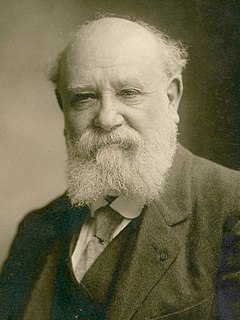
Charles Le Goffic was a Breton poet, novelist and historian whose influence was especially strong in his native Brittany. He was a member of the Académie française.
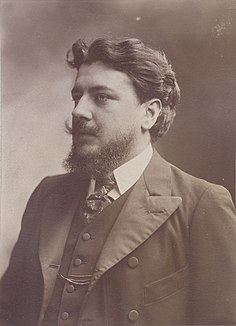
René-Emmanuel Baton, known as Rhené-Baton, was a French conductor and composer. Though born in Courseulles-sur-Mer, Normandy, his family originated in Vitré in neighbouring Brittany. He returned to the region at the age of 19, and many of his compositions express his love of the area. He also had close relationships with composers of the Breton cultural renaissance, notably Guy Ropartz, Paul Le Flem, Paul Ladmirault and Louis Aubert. As a conductor he was notable for his attempts to expand appreciation of classical music.

Francis Renaud (1887–1973), was a Breton sculptor mainly noted for his monumental granite public memorials in Brittany.

Jean-Baptiste-Théodore-Marie Botrel was a French singer-songwriter, poet and playwright. He is best known for his popular songs about his native Brittany, of which the most famous is La Paimpolaise. During World War I he became France's official "Bard of the Armies".
Octave-Louis Aubert, (1870–1950) was a French editor and writer associated with Breton nationalism.

Laxdæla saga, also Laxdœla saga, Laxdoela saga, Laxdaela saga or The Saga of the People of Laxárdalr, is one of the Icelanders' sagas. Written in the 13th century, it tells of people in the Breiðafjörður area of Iceland from the late 9th century to the early 11th century. The saga particularly focuses on a love triangle between Guðrún Ósvífrsdóttir, Kjartan Ólafsson and Bolli Þorleiksson. Kjartan and Bolli grow up together as close friends but the love they both have for Guðrún causes enmity between them and, in the end, their deaths.